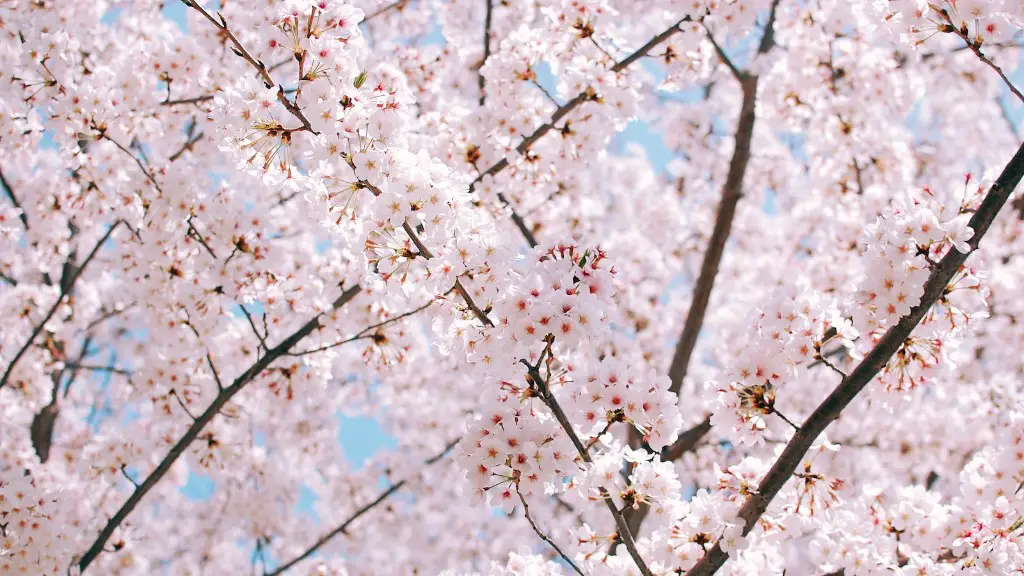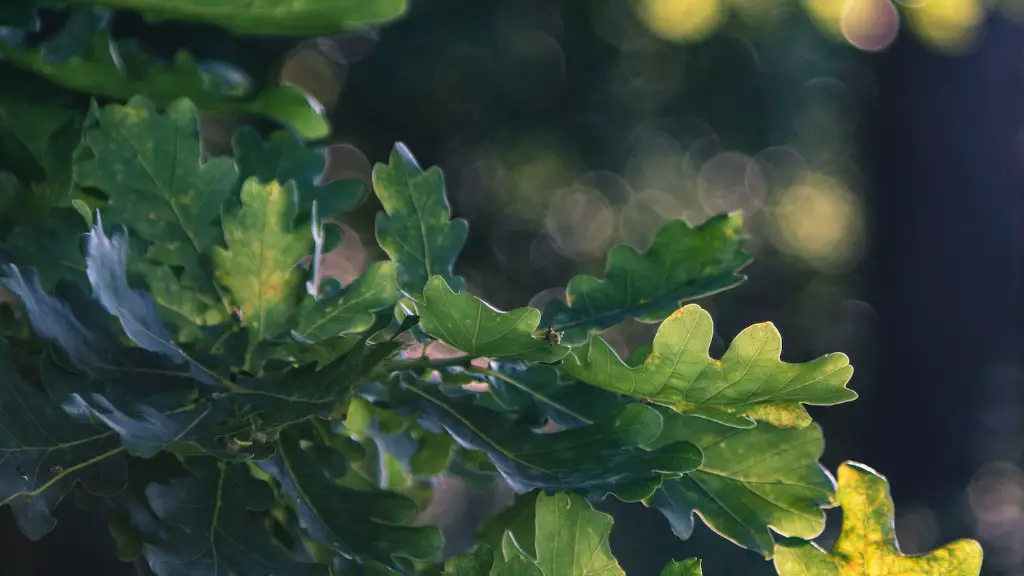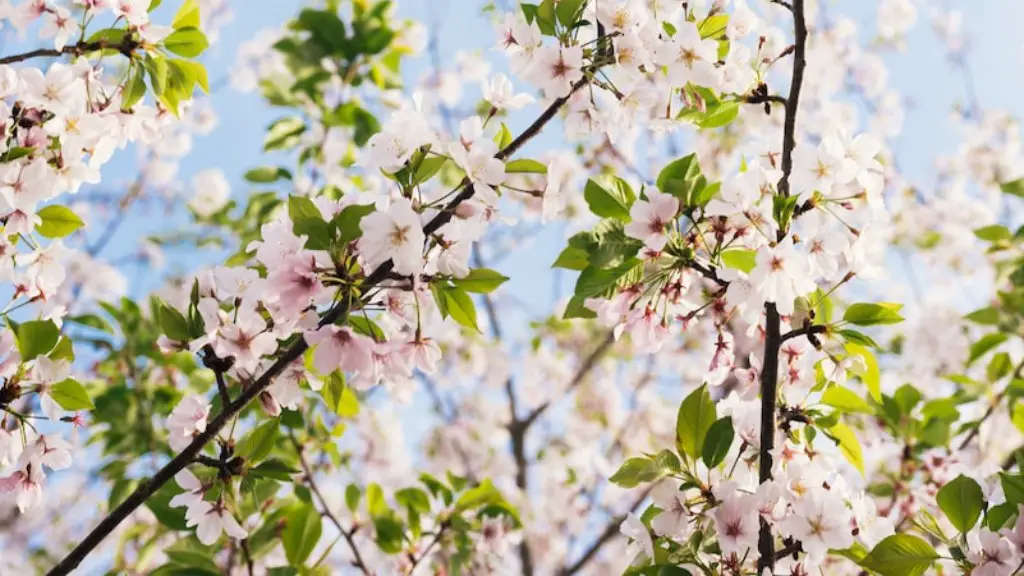Cherry trees are among the most beautiful fruit trees, truly living up to their name as a source of colour and vitality in one’s space. While a great addition to any garden or landscape, cherry trees just like any other tree require proper attention and care. When it comes to the topic of water, many cherry tree owners tend to be left wondering: how often should one water their tree?
Prior to determining the frequency of watering, it is essential to first acknowledge the elements influencing the water requirements of one’s cherry tree. For instance, the temperature of the area in which the cherry tree is grown as well as the soil in which it is planted play significant roles in the watering regimens. Typically, cherry trees growing in areas with higher temperatures and dry soil will require more frequent watering than those in cooler, wetter environments. Additionally, the age and species of the tree are beneficial factors to consider in the decision making process.
As a general rule, new cherry tree seedlings should be watered daily to ensure a healthy growth. This however, is subject to change once the tree is established; mature trees generally need only 10-12 gallons of water per week. To achieve the desired hydration levels, gardeners often suggest that beginners to cherry trees create a 3-4 foot water basin around the base of the tree’s trunk. This will necessitate that the area be kept moist and the tree’s roots will be adequately nourished.
An alternative to the above advice comes from experts who suggest that cherry trees are only to be watered when absolutely necessary. Such a task may require the careful observation of the state of the tree – when the leaves start turning brown and curling, the tree is likely in need of further hydration. This method needs to be handled with caution as overwatering may lead to issues such as root rot.
With the above in mind, it is essential that cherry tree owners create an individual watering regimen to best cater to and suit the seedling’s needs. This may even require frequent and repeated adjustments over the season. Furthermore, it is highly recommended to check the soil every few days to ensure that it has the necessary moisture levels to promote growth as opposed to just adhering to a weekly routine. Doing this will help gardeners save time, effort and money in the long run.
Mulching and Pruning
Apart from watering, mulching can be highly beneficial for those seeking to optimise the health of their cherry tree. When done around the base of the tree, it can aid in the conservation of water which can come in handy during dryer, hotter weathers. It is therefore important for tree owners to regularly check their mulch and apply anew when needed.
Prune cherry trees effectively every year and every season if they require it. Pinch back their sides, tip and bud positions, and remove any dead or loose branches. It is important to keep it short and tidy in order to ensure all of the tree’s energy can be focused on fruit growth. Do not over prune, as this could damage the cherry tree.
It is also important to keep an eye out for any pests who may be leeching off of the tree and damaging the foliage. These include aphids, mites, and scale which can be treated via the use of horticultural oils. Doing this in a timely and precise manner will ensure the hindrance of any potential, long-term damage which may be caused by these pests.
Fertilizing
Fertilizing cherry trees is also essential to ensure proper nourishment. Firstly it is essential to determine what type of soil is present in the area of the tree’s growth and buy fertilizers which are compatible to the type. Secondly, ascertain the age of the tree – fruit and flower bearing cherry trees are to be fertilized minimally and more precisely than those in the first few years. Thirdly, gardeners must read the instructions before applying the fertilizer so as to understand the amount necessary for the tree’s hydration requirements. Lastly and most importantly, throughout the growth of the tree, soil PH and nutrient levels must be regularly monitored to ensure the optimal development of the tree.
Weed Control
It is not only necessary to take care of pests attacking the tree but also the weeds that may be surrounding it. In fact, weeds can often prove to be more detrimental than pests as the cherry trees will suffer from the competition for nutrients, water, and sunlight. Therefore, it is important to keep the area weed free so as to ensure that the cherry tree receives its full dose of nourishment.
Taking care of a cherry tree requires patience and diligence which gardeners must be mindful of when creating their own watering regimen. Nevertheless, the value garnered from having a cherry tree in one’s garden can be truly worth the effort.
Staking
When the tree is still in its first year, it needs a bit of extra support. Establish a stake into the ground, then tie the trunk to it gently with a cloth strap. Make sure the strap is not too tight, nor is it too loose. The stake should reach the same height as the cherry tree itself, providing the necessary support to the sapling.
It is also important to remember to move the strap occasionally to allow the tree to slowly straighten itself up to gain a strong trunk. Do this lightly and slowly. Once the tree is mature, or when it reaches the height of two or three feet, you can remove the stake and strap.
Irrigation Systems
Irrigation systems are always an advisable and beneficial addition when it comes to watering cherry trees. Through such systems, gardeners are able to determine the exact amounts of water which their trees require as opposed to manually watering it with a watering can which may result in one over- or under-watering its tree.
Setting up an irrigation system requires the selection of the most suitable system for the area in which the tree is grown. Furthermore, owners must check the lines of their system frequently and some may even be wise to establish an home-made automated system or purchase an ideal option from local stores or online retailers.
Tree Trimming
When it comes to pruning, trimming is an extremely important practice to undertake. Although, one may not be able to notice much, trimming helps maintain the shape of the cherry tree and also provides it greater room for natural, balanced growth. From the first few years, it is recommended to remove weak or damaged branches, those growing inwards or outwards, as well as those that are crossing one another.
Also, if the cherry tree has become too tall, one can simply cut off the additional height. It is however, essential to ensure that this is done properly and safely, especially when dealing with taller cherry trees. In order to obtain optimal results, trimming and pruning should be done during the dormancy season.




